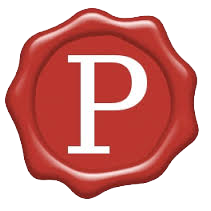| The Lord of the Flies contains many examples of symbolism which Golding has incorporated to show a deeper level to the main, mostly straightforward, storyline that reveals his thoughts on the nature of humanity and evil. |
"Flugornas herre" innehåller många exempel på hur Golding väver in symbolik i den annars mestadels raka huvudberättelsen och på så sätt fördjupar den och avslöjar sina tankar om människans och ondskans natur. |
| Below are some of the main symbols used in the book, but there are plenty more for you to discover yourself. |
Nedan hittar du några av huvudsymbolerna som används i boken, men det finns många fler som du kan upptäcka själv. |
| Among such symbols may be included such small or natural seeming events like the coral reef, (Submarine warfare, surrounding of Britain by German U-boats?) or the "great fire", which may represent the first world war, ("We shall never commit to this savagery again"). |
Bland symbolerna kan även små och till synes naturliga händelser räknas in, som korallrevet (undervattenskrig, Storbritannien omgivet av tyska ubåtar?) eller "den stora eldsvådan", som möjligtvis symboliserar första världskriget ("Aldrig mer ska vi begå sådan barbari"). |
| Blood is another symbol Golding uses extensively, although what he uses it for is open to interpretation. |
Blod är annan symbol som Golding använder sig flitigt av, men vad han låter det symbolisera är öppet för tolkning. |
| The different styles of leadership shown by Jack and Ralph symbolize democracy and dictatorship, much like as depicted in George Orwell's Animal Farm where he used pigs to symbolize the USSR's communist leaders. |
De olika ledarstilarna som Jack och Ralph uppvisar symboliserar demokrati och diktatur, i likhet med George Orwells "Djurfarmen", där han lät grisar representera Sovjetunionens kommunistiska ledare. |
| The imaginary beast that frightens all the boys stands for the primal instinct of savagery that exists within all human beings. |
Det inbillade odjuret, som alla pojkarna är rädda för, står för den grundläggande förmågan till råhet som finns inom alla människor. |
| The boys are afraid of the beast, but only Simon reaches the realization that they fear the beast because it exists within each of them. |
Pojkarna är rädda för odjuret, men det är bara Simon som inser att anledningen till att de är rädda för odjuret är att det finns inom var och en av dem. |
| As the boys grow more savage, their belief in the beast grows stronger. |
I takt med att pojkarna blir allt råare stärks deras tro på odjuret. |
| By the end of the novel, the boys are leaving it sacrifices and treating it as a totemic god. |
I slutet av romanen lämnar pojkarna offergåvor till det och förhåller sig till det som till en totemgud. |
| The boys’ behavior is what brings the beast into existence, so the more savagely the boys act, the more real the beast seems to become. |
Det är pojkarnas beteende som väcker liv i odjuret, ju mer bestialiskt de beter sig, desto verkligare tycks odjuret bli. |
| The boys "become" the beast when they kill Simon. |
Pojkarna "blir" odjuret när de dödar Simon. |
| Golding describes the savages' behavior as animal like; the savages dropped their spears (man's tool) and "screamed, struck, bit, tore. There were no words, and no movements but the tearing of teeth and claws." |
Golding beskriver "vildingarnas" beteende som djurlikt. De släppte sina spjut (människoverktyg) och "skrek, slog, bet, rev. Ingen sa något och det förekom inga andra rörelser än tändernas och klornas rivande."
Och detta avslutar texten. |

